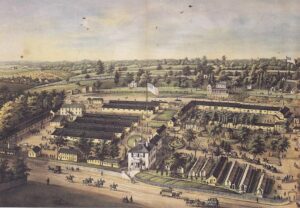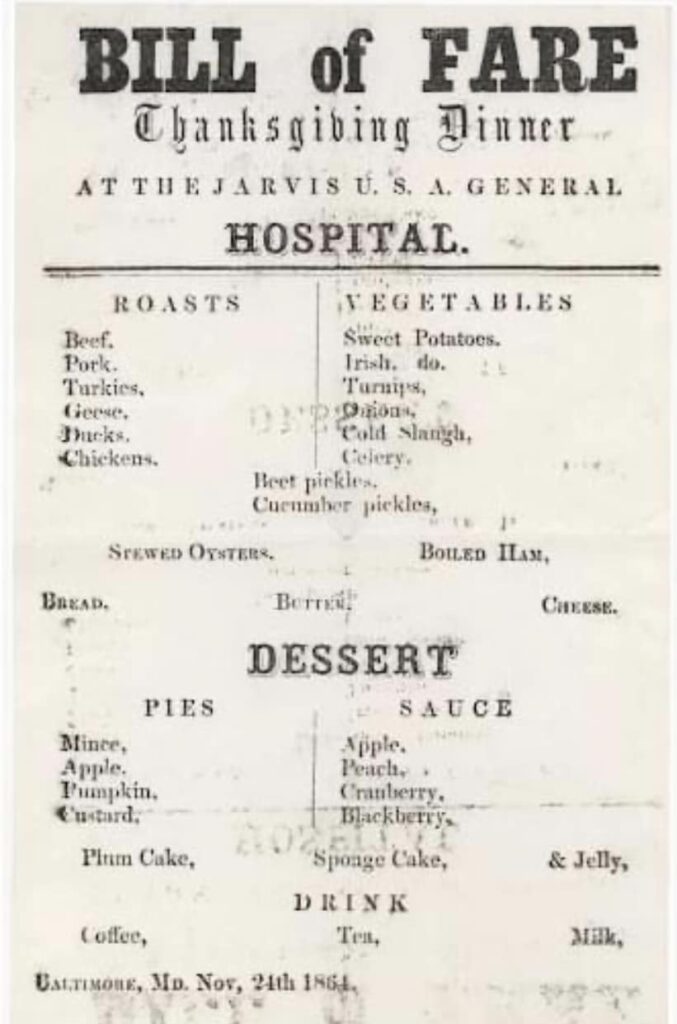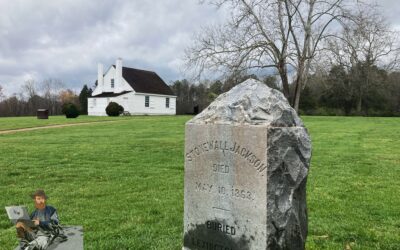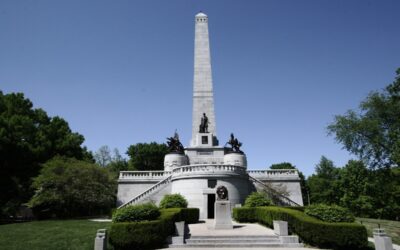Thanksgiving during the Civil War wasn’t the extravagant feast we know today. But in 1864, even soldiers recovering in hospitals like Jarvis General in Baltimore experienced the comfort of a holiday meal. The Jarvis U.S. General Hospital was a military hospital founded in Baltimore, Maryland, in 1861 at the beginning of the American Civil War, for the care of wounded Federal soldiers.The hospital was built on the grounds of Maryland Square, the former residence of the Steuart family. Much of the family’s property was confiscated by the Federal government as a consequence of their participation in the Confederate Army.
On May 25, 1862 the property was taken into the control of the medical director of the US Army, with the former Steuart mansion serving as the main administration building for the hospital.The hospital, which had a capacity of 1,500 beds, was built on relatively high ground, which at the time was on the edge of the city of Baltimore, and, according to one contemporary writer, benefited from “a salubrious air”. It was named in memory of surgeon N.S. Jarvis, of the US Army, who died while medical director of the Middle Department.
A Wartime Thanksgiving Meal: What Was on the Table?
Unlike the Thanksgiving dishes of families back home, meals in hospitals were basic but carefully planned. Since the 1840s, this “menu trinity” had become Thanksgiving tradition, largely due to Sarah Hale, editor of Godey’s Lady’s Book. Hale’s annual Thanksgiving articles, poems, and recipes, from turkey stuffing to pumpkin pie, played a key role in the campaign for a national Thanksgiving holiday, culminating in President Lincoln’s 1863 proclamation.
The following is a “Bill of Fare” for what the patients at Jarivs had for Thanksgiving on November 24, 1864. You can see that it was quite the spread including beef, pork and “turkies”. On the vegetable side, they had sweet and Irish potatoes and “cold slaugh.” On the menu, the feast included stewed oysters and boiled hams. Lastly, let’s not forget about the deserts. All types of pies, including pumpkin, cakes and sauces to round off the dinner.
Food Supply Challenges and Resilience
Supplying Civil War hospitals was usually a logistical challenge. Fresh meat and produce were often scarce, and foods like salted pork, hardtack, or beans made up the core of soldiers’ diets. Regional specialties like Maryland biscuits, a Southern favorite, may have brought a taste of home to hospital meals, if ingredients could be found. Julia Grant, in her memoirs, praised the culinary talents of Mary Robinson, the Dent family’s enslaved cook, reminiscing about the “beautiful snowy cake, delicious Maryland biscuits, exquisite custards and puddings” she prepared. The presence of a favorite like Maryland biscuits on Thanksgiving tables reflected not only the regional traditions but also the comfort these foods brought in uncertain times.
Classroom Ideas for Teachers
- Primary Source Analysis
Share the “Bill of Fare” with students as a primary source document. Have them compare it with a modern Thanksgiving menu and discuss what each dish reveals about life during the Civil War. - Thanksgiving Through History
Ask students to create a timeline of Thanksgiving foods from the 1800s to today. Let them explore how traditional dishes like Maryland biscuits and chicken pie fit into regional and historical contexts. - Create a Civil War Thanksgiving Menu
Invite students to research Civil War-era foods and create their own “Thanksgiving menu” from that period. They could even try preparing a simple recipe at home, like Maryland biscuits!
Maryland Biscuits Recipe
1 teaspoon salt
½ cup lard or butter
1 ½ cup water, milk or cream
1: Place flour, salt and lard/butter in a mixing bowl. Cut (mix) lard into flour using finger tips until lard in mixed into flour.
2: Mix in a little of the water or milk at a time, mixing to create a stiff dough. Note, if dough is too dry, add a little more liquid. Too wet, add a little more flour.
3: Place dough on a work table that has been lightly floured.
4: Using a mallet or a rolling pin beat the dough until it begins to blister. This takes about a half hour.
5: pat out dough and cut into rounds or pinch dough off to make small balls about the size of a small egg and flatten a little before placing on baking sheet.
6: Place biscuits on a greased baking pan. Using a fork poke a few holes in the top of each biscuit.
7: Bake at 425 degrees for 20 – 25 minutes – until brown. Serve hot
Makes about 2 dozen biscuits.
What’s on your Thanksgiving menu?






0 Comments